
20 Stunning Flowering Shrubs For Landscape Design Purposes
Published: 17/01/2023 | Updated: 22/05/2023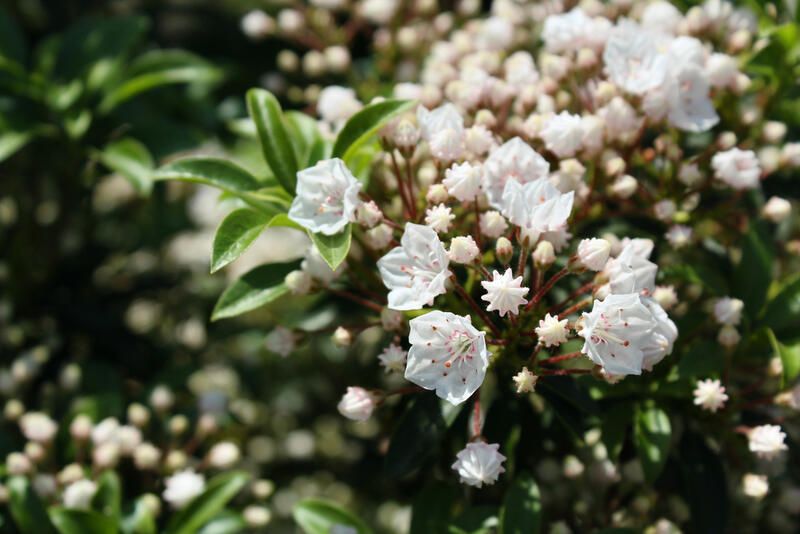
You might not know it, but many landscaping shrubs can be used to create stunning yard designs. There are more than you'd think!


If you're looking for a way to expand your landscaping bushes options beyond the typical azalea and koi pond plants, then this list of 20 flowering shrubs will be right up your alley.
From blueberries to mountain laurels, these beauties will prove indispensable in any garden or landscape design scheme:
1. Mountain Laurel
Mountain laurel is a native evergreen shrub that’s commonly found in eastern North America. It can grow to be 12 feet tall and 10 feet wide, which makes it great for adding height to your garden or landscape design!
Mountain laurel prefers moist soil, so you may want to consider planting this one in a slightly shadier spot. The flowers are pale pink and fragrant and appear in early spring to early summer, making them an excellent choice for bringing color into your winter garden design.
You should also make sure that your mountain laurel has well-drained soil because it can struggle if its roots sit in too much water.
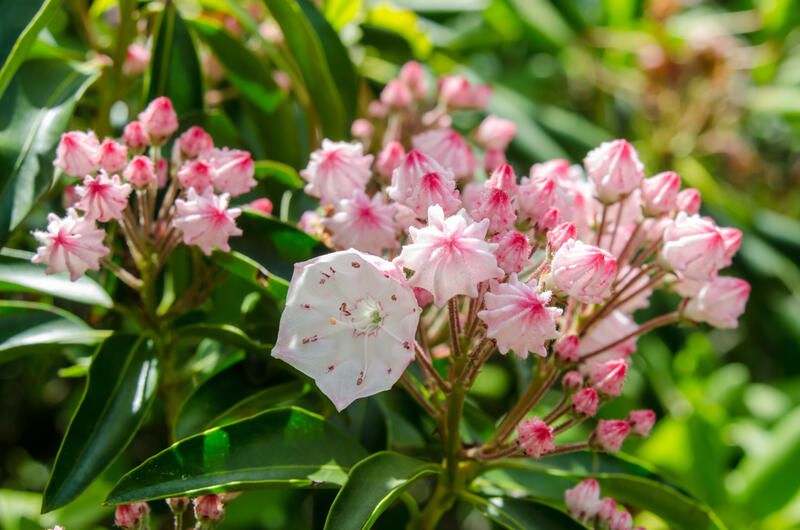
2. Hibiscus Syriacus (Rose of Sharon)
Hibiscus Syriacus (Rose of Sharon) is a perennial shrub that can grow up to 20 feet tall and 10 feet wide. It tolerates full sun or partial shade and grows best in moist soil.
This plant can be trained as a small tree, but it's more commonly used as a large flowering bush.
If you'd like to use The Rose of Sharon in your landscape design, make sure to only prune during certain times of the year: late fall through winter; and early spring right after flowering ends until new growth begins. This plant may be grown in zones 5-9.
3. Oakleaf Hydrangea
The Oakleaf Hydrangea was named for its oak-like leaves. It blooms in the summer and fall, producing small cone-like white flowers that are perfect for this time of year.
The plant itself is a shrub with a mounding shape, growing up to six feet high and wide. It can be planted in any soil type but prefers acidic soil (pH 5-6).
A large number of cultivars exist within this species, including:
-
Annabelle, which has pink flowers instead of white
-
Glen Ellyn, which has pinkish-purple foliage
-
Minuet, which is blue
-
Moonlight, which is yellowish green with white flowers
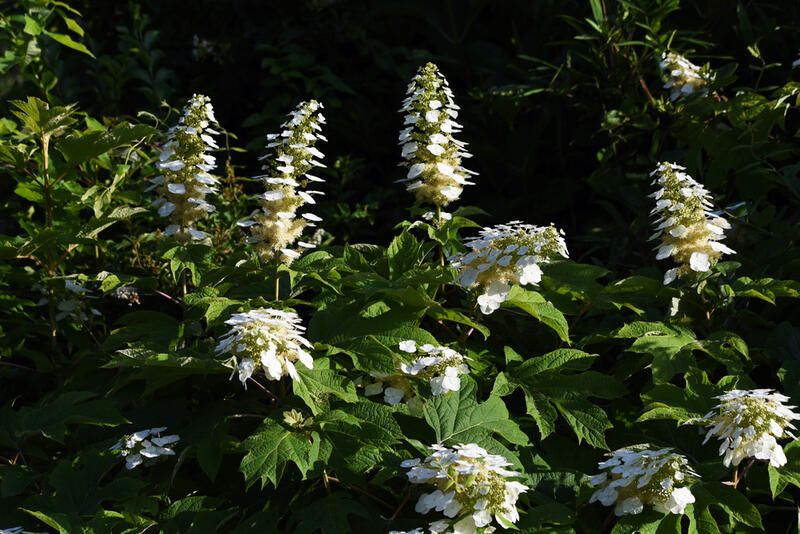
4. Barberry
If you have a small space that needs an explosion of color, the barberry is a perfect option. This landscaping shrub has dense, compact growth and produces an abundant display of clustered yellow flowers in spring.
There are many cultivars available to suit any landscape style; some have dark green foliage while others feature variegated leaves.
These shrubs prefer full sun to partial shade and tolerate drought and poor soils, making them ideal for xeriscaping as well as other less hospitable landscapes.
Some varieties of barberry include:
-
Green Japanese Barberry (Berberis thunbergii ‘Ou Katsura’)
-
Orange Flowering Barberry (Berberis x leonardii ‘Flame’)
-
Garden Barberry (Berberis thunbergii)
-
Crimson Pygmy Barberry (Berberis thunbergii ‘Atropurpurea’)
-
Red Flowering Barberry (Berberis x leonardii)
5. Forsythia
Forsythia (Forsythia x intermedia) is a hardy shrub that grows well in zones 4 to 8. It's a great choice for those who want a showy flowering shrub, but don't want to worry about the plant dying back every winter.
The foliage turns bright yellow in spring, which makes it an ideal addition to any garden as it adds color and texture. Forsythia can be pruned to keep it compact and dense, making it perfect as a hedge or screen.
It is also excellent for foundation planting due to its height and width of growth (10-15 feet tall by 8-12 feet wide).
You can train Forsythia into a standard shape, which will make it look much more formal than other landscape plants with similar growing habits like dogwood trees or boxwoods.
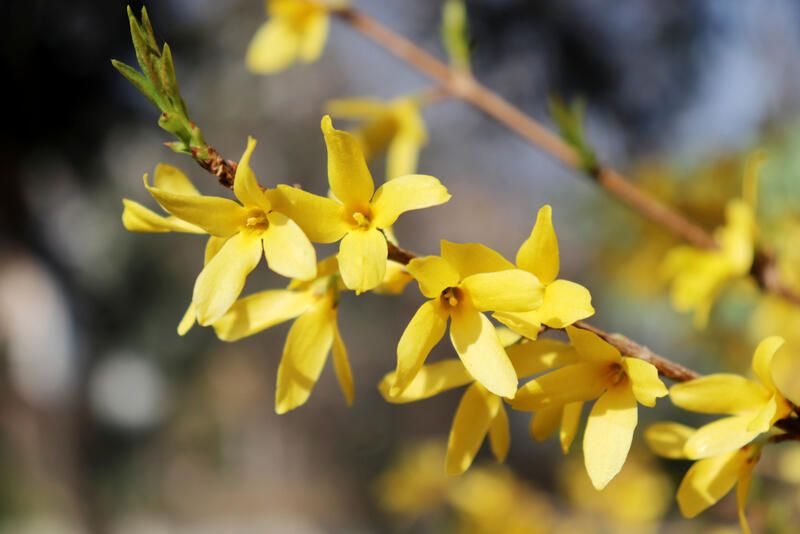
6. Blueberries
It's easy to see why blueberries are so popular. They're beautiful, hardy, and low maintenance. They're also great for wildlife, so if you're looking for shrubs and bushes that will benefit the environment, this might be your best option.
Blueberry trees can grow in many different soil types and tolerate shade well, so they make an excellent addition to any yard or garden.
If you've been searching for the perfect plant that will provide shade while improving the health of your soil—look no further than blueberries!
These amazing shrubs come in several varieties including mountain cranberry (Vaccinium Vitis-idea), highbush blueberry (Vaccinium corymbosum), and rabbiteye blueberry (Vaccinium ashei).
7. Azaleas
Azaleas are flowering shrubs with showy fragrant flowers and colorful foliage that offer color throughout spring, summer, and fall.
These plants are hardy and adaptable to a variety of conditions, making them a popular choice for landscaping purposes. They grow in full sun or partial shade.
They are native shrubs to China, Japan, and Korea, but can be grown in the US too.
8. Rhododendron
You might be surprised to learn that the Rhododendron is not a tree at all, but rather a shrub. It's also not related to the rhododendrons you'd find in your local nursery -- this plant is native to eastern Asia and North America.
There are approximately 1000 species of Rhododendron! The word "rhododendron" comes from the Greek words rhódon (rose) and dendron (tree), which gives us an indication of what these plants look like.
Rhododendrons come in many shapes and sizes: some are trailing vines while others reach over 3 meters tall; some have leaves shaped like ovals while others have three-lobed foliage.
Some varieties flower year-round while others only bloom during springtime or summer months; some boast clusters of pink blossoms while others display masses of white flowers with deep purple spots adorning them.
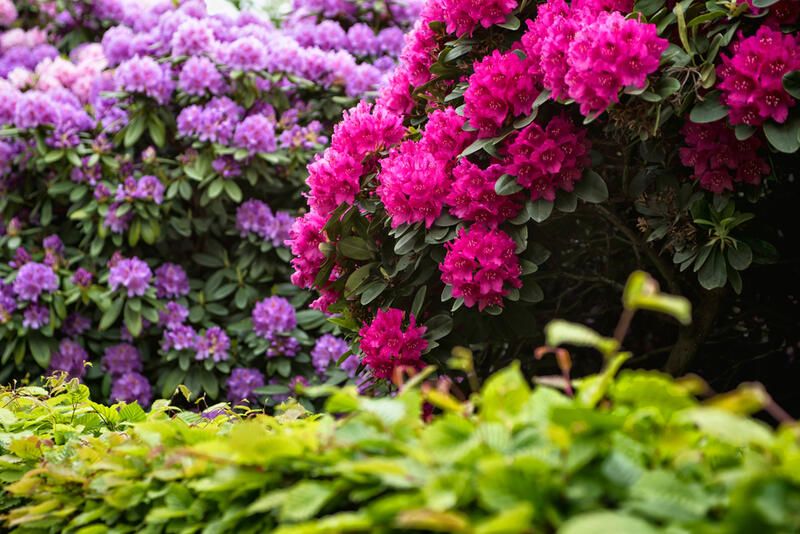
9. Butterfly Bush (Buddleia davidii)
A butterfly bush is a medium to large shrub that can grow up to 6 feet tall. It has fragrant, white flowers and is hardy to zone 5.
Butterfly bush needs full sun or partial shade, with good drainage; it’s drought tolerant despite its thirst for water during the first year of establishment.
It also happens to be deer resistant and attracts butterflies like bees do honey! Although not technically a native to North America, it has naturalized and found its way here anyway. This plant was brought by colonists who wanted some European flair on their properties (and I don't blame them).
10. Camellias
Camellias are lovely evergreen varieties that grow best in partial shade or full sun. They have glossy green leaves and fragrant white, pink, or red flowers.
Their popularity is due to their resistance to pests, disease, and drought. They also require very little maintenance once established in the landscape.
Camellias are ideal for growing in containers because they'll provide you with a year-round display of bold colors without requiring much attention at all!
11. Weigela florida (Weigela)
Weigela florida is a flowering shrub that is native to Japan. It was introduced into the United States in 1894, where it has become widely planted as a landscape plant.
Weigelas are popular because they flower in early summer and are long-lived plants that can be grown as hedges or screens. They can also be trained as small trees (they'll reach up to 20 feet tall) and even grown in containers.
Weigelas prefers full sun but will tolerate partial shade if needed. They like moist soil and regular watering during their first year after planting to establish their root systems.
Once established, weigelas need very little water once every week or two should be sufficient for most varieties of this plant.
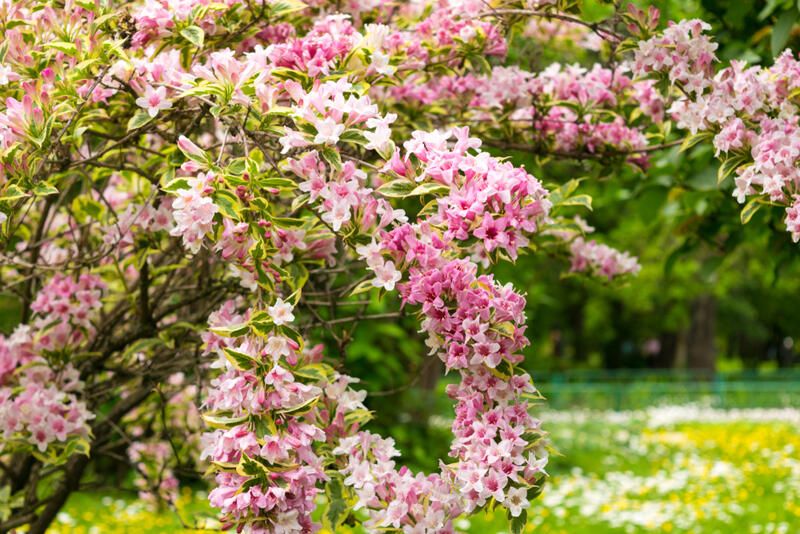
12. Deutzia scabra (Deutzia)
Deutzias are deciduous shrubs that grow up to 6 feet tall and have fragrant white flowers in the spring.
They prefer full sun and moist soil.
The plant is tolerant of drought and will only require regular watering in its first year after planting. After that, it should be watered every week or two during the summer and once a month during the winter season.
13. Gardenias
Gardenias are evergreen shrubs that grow up to 10 feet tall and have glossy foliage and white flowers with a sweet fragrance. It is a genus of flowering plants in the tea family, Theaceae.
They can be grown in full sun or partial shade, and they prefer moist soil.
It comprises 100 species of shrubs and small trees, some of which are cultivated for their flowers or fruits, while others are popular ornamental plants in warm temperate regions worldwide.
Gardenia flowers are around 3-4 feet tall and bloom during springtime. They produce fragrant white flowers with yellow centers that last about 2 weeks before falling off.
Gardenias come from southeastern Asia where they grow naturally in moist tropical forests and coastal areas with temperatures ranging from 20°C-30°C.
14. Pieris japonica (Pieris)
Pieris japonica, also known as the Japanese Pieris or Korean Pieris, is an evergreen shrub native to Japan and Korea. It can be grown as a hedge or specimen plant. In springtime, it produces fragrant floral buds that look like they were taken straight out of a fairy tale.
Its leaves are dark green on top and silvery underneath, making them appear iridescent in certain lighting conditions.
The plant grows up to 8 feet tall and has a spreading habit with multiple stems from the base. It prefers partial shade but will tolerate full sun if given some protection from direct rays in summertime (around noon).
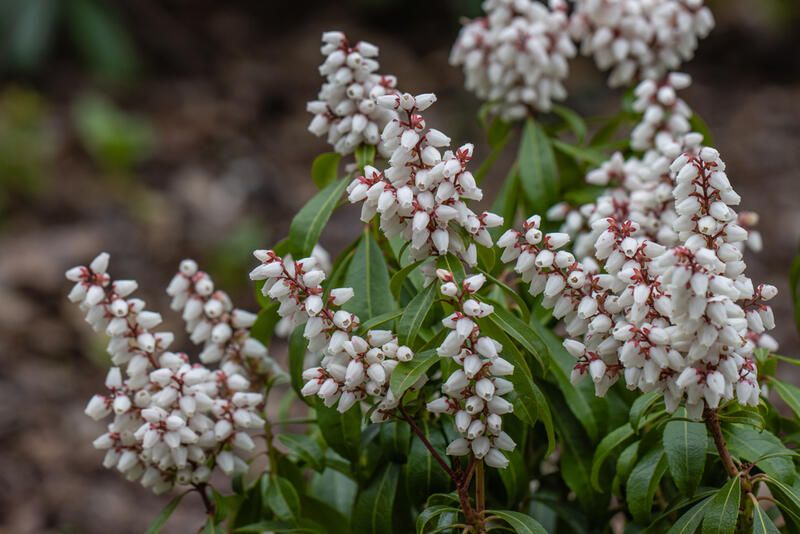
15. Spirea x bumalda ('Goldflame' spirea)
The ‘Goldflame’ spirea is a perennial flower that blooms in spring. It has golden-yellow flowers and does best in partial shade to full sunlight.
The shrub will grow well in moist soil and can reach heights of 3 to 5 feet with widths of 4 to 6 feet. The growth rate for this plant is slow, taking about 8 years for it to reach maturity.
The flowers bloom from June through September and are fragrant, although not very strong smelling compared to other varieties of landscape shrubs. They'll attract hummingbirds who love the nectar of these plants!
16. Holly
Holly is a broadleaf shrub or small tree with evergreen foliage. It is most often used in ornamental plantings, perhaps because it has such pretty berries in winter.
Holly also makes an excellent Christmas decoration, especially when paired with poinsettias.
Holly tolerates shade and prefers moist soil, but will tolerate drought conditions once established in the landscape.
Holly becomes more disease-resistant as it matures, but if you have problems with leaf spots or rust during the first three years after planting your holly, you can improve its health by pruning away damaged branches and twigs at ground level immediately after infection occurs (but before spores spread).
What's most impressive about Hollies is that they're very hardy plants that can tolerate winter temperatures as low as -25 degrees Celsius (or -31 Fahrenheit).
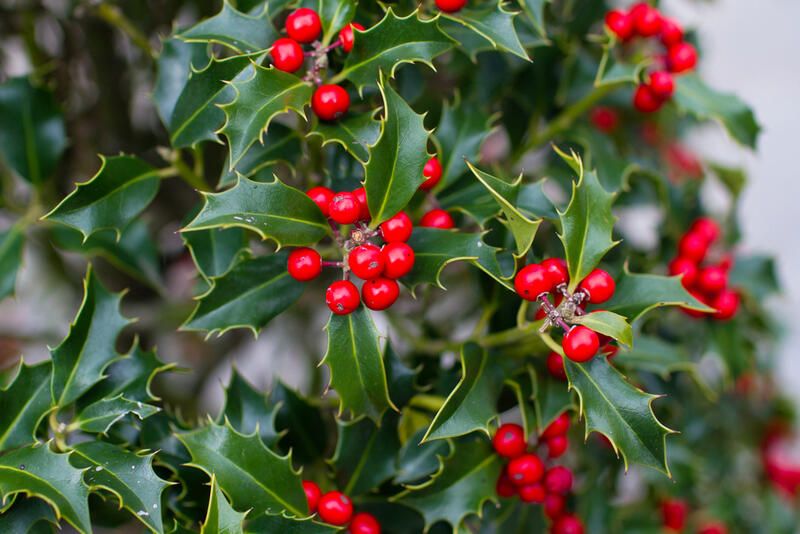
17. Ninebark
Ninebark (Physocarpus opulifolius) is a choice ornamental shrub that provides a bright display of spring flowers, vivid autumnal foliage, and colorful fruit.
It is hardy in U.S. Department of Agriculture plant hardiness zones 3 through 8 and can be grown as either a small flowering hedge or as an informal ground cover or foundation plant.
The ninebark grows best when planted in full sun or partial shade with well-drained soil and tolerates drought conditions.
It blooms from May through June with clusters of fragrant white flowers followed by bright red berries in fall that attract birds.
This upright Japanese native grows 10 to 15 feet tall but should not be pruned to shape it until after the first year after planting; thereafter, prune if needed for desired size or shape by cutting back stems at any time.
18. Purple Lilac Shrubs
Purple Lilac is a deciduous shrub that has fragrant, showy blooms in spring. What makes this plant especially unique is its ability to grow in zones 3-7 and survive winter temperatures as low as -40F.
Purple Lilac grows best in full sunlight but can tolerate shade as well. It's one of the few types of lilacs that grow well in humid climates!
When selecting a purple lilac for your landscaping needs, there are several factors to consider:
-
Size (ranging from 3' up to 8')
-
Bloom time (typically May-June)
-
Fragrance intensity (weak or strong)
-
Overall healthiness (some varieties are more susceptible to disease than others).
One thing you don't have to worry about is watering this plant. Since it's deciduous—meaning it loses its leaves every fall—it doesn't require much water once summer turns into fall!
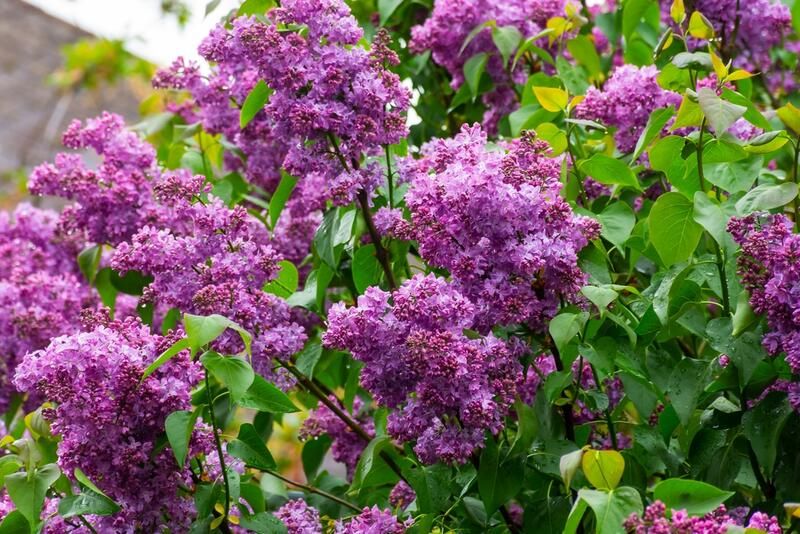
19. Shrubby Cinquefoil
The shrubby cinquefoil is a small, graceful perennial with a mounding habit and yellow flowers that bloom in spring. It tolerates drought and needs light shade to thrive.
The plant will grow up to 3 feet wide by 3 feet tall at maturity in USDA zones 4 through 8. In warmer climates, it can reach 5 feet tall with more spread. Its narrow leaves are smooth on top and finely hairy underneath, making them easy to identify when walking around your yard or garden.
The plant produces bright yellow blooms in clusters of five petals each from March through June—a lovely contrast against its gray-green foliage during this time of year when most other plants are dormant!
This flowering shrub has thin stems that may turn reddish as they mature; however, do not be alarmed if this happens because it is natural for many plants' stems/trunks to turn red as time goes on (especially when exposed to sun).
If you prefer not having this happen then simply keep your plant shaded from direct sunlight during the spring months.
20. Staghorn Sumac
The Staghorn sumac is a native plant to the eastern United States, and it can grow in full sun or partial shade.
This landscaping shrub is drought tolerant, so you won't have to worry about watering this plant all that often.
It can grow as high as 10 feet tall and wide, so be sure not to place your Staghorn sumac too close to structures like houses or decks!
If you live in an area where temperatures drop below freezing during the winter months, this shrub may not be right for your landscape design purposes thanks to its lack of cold tolerance.
Additionally, Staghorns are not very wind tolerant either—if winds are common in the area where you live (or even if they aren't), consider placing them near other plants that will provide some shelter from strong gusts of wind.
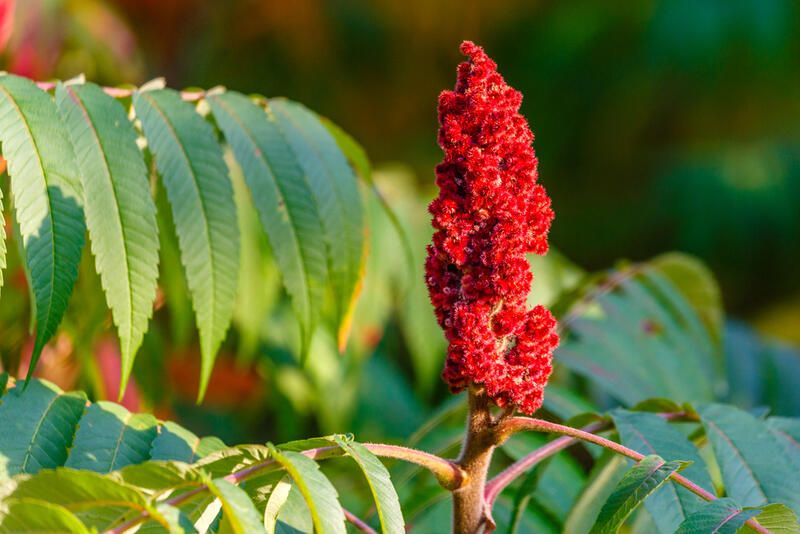
Plant Your Favorite Landscaping Shrubs!
We hope you’ve enjoyed this list of landscape shrubs for your yard design. It’s not easy to find the perfect shrub, but with a little bit of research and consideration, you’ll be able to create a beautiful garden that will be sure to impress.
And as always if you need the advice of some landscaping experts, don't hesitate to contact ShrubHub for a free consultation session! You can get up to 70% discounts on your first landscaping order!


